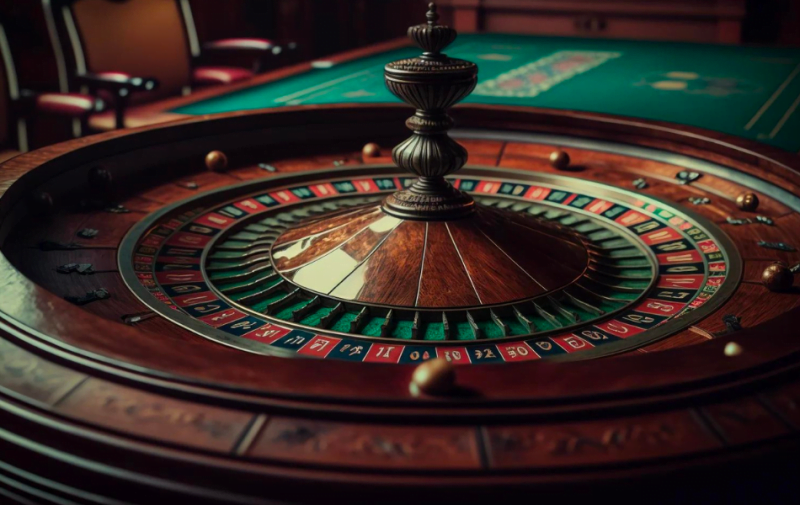The roulette table is a timeless classic in the world of casinos. The sound of the ball spinning around the wheel, the clinking of chips, and the excited chatter of players create a unique atmosphere that is hard to resist.
However, for some people, the temptation to cheat at the roulette table can be too great to resist. This post will explore facts about cheating roulette and whether or not it’s possible.
Cheating methods range from simple to complex. They include everything from using magnetic balls to modify the roulette wheel to electronic devices that track the speed and timing of the ball and wheel.
What is Roulette?
Roulette is a game of chance that originated in France in the 18th century. The game is played on a large wheel with numbered slots, and a small ball is spun around the wheel in the opposite direction. Players bet on where the ball will land when the wheel comes to a stop.
The roulette table is where all the action takes place. The table is covered with a green felt cloth and has a wheel on one end and a betting area on the other. The wheel is divided into numbered slots, alternating between red and black, with a green slot for the number zero (and sometimes a double zero in American Roulette). The betting area is divided into sections for inside and outside bets.
Popular Roulette Cheaters
Throughout history, there have been many roulette cheaters who have tried to outsmart the system and win. Some succeeded, while others faced the consequences. Here are a few examples of the most infamous roulette cheaters of all time:
Richard Marcus – Marcus was a master of “past posting,” a technique that involves adding chips to a winning bet after the ball has landed. Marcus would distract the dealer while his accomplice made the switch, allowing them to walk away with millions of dollars.
Monique Laurent – Laurent was a brilliant mathematician who discovered a flaw in a roulette wheel. This flaw allowed her to predict the outcome of every spin with incredible accuracy. She and her team won millions of dollars before they were caught.
Gonzalo Garcia-Pelayo – Garcia-Pelayo was a man who spent years analyzing roulette wheels, looking for patterns that would allow him to predict the outcome of a spin. His methods were so effective that he won millions of dollars for several years.
Francis Farrugia – Farrugia was a technician who rigged a roulette wheel in a French casino. He controlled where the ball landed. He and his accomplices won over a million euros before they were caught.
Joseph Jagger – Jagger is the father of roulette cheating. In the late 1800s, he hired a team of clerks to record the outcomes of spins on a particular roulette wheel in Monte Carlo. He discovered that the wheel was not perfectly balanced, allowing specific numbers to appear more frequently. He then placed bets on those numbers and won a fortune.
Common Cheating Methods at the Roulette Table
Top Hatting – The Art of Sleight of Hand
Top hatting requires skill and precision. In this method, the player places additional chips on a winning number after the ball has landed. This distracts the dealer allowing the player to quickly add more chips to their bet, increasing their payout. The trick to successfully pulling off top hatting is to distract the dealer’s attention from the table for a few crucial seconds, giving the player just enough time to add the chips unnoticed.
Magnetic Balls – A Stealthy Approach
Magnetic balls are a relatively new addition to the list of cheating methods at the roulette table. Players use a magnetic ball instead of the regular one. The player or an accomplice controls the ball remotely, making it land on a predetermined number or color. This method is incredibly difficult to detect since the ball looks identical to the real one. It requires a lot of skill and planning to pull off. It’s a popular choice for professional cheaters.
Past Posting – A Classic Move
Past posting is a classic cheating method used at the roulette table for centuries. In this method, the player places their chips on the winning number after the ball has landed. This method requires the help of an accomplice to distract the dealer while the player places the chips. Past posting requires quick reflexes and excellent timing.
Wheel Rigging – The Most Sophisticated Method
Wheel rigging is the most sophisticated cheating method. It requires a lot of planning and expertise. The player or an accomplice manipulates the roulette wheel’s mechanics to control the ball’s landing position. It’s a favorite of high-stakes players. However, rigging the wheel requires time and effort, and it’s not a viable option for most cheaters.
Chip Dumping – A Coordinated Effort
Chip dumping is when the player colludes with an accomplice to transfer chips between them. This allows the player to have a larger bet without spending more money. This method requires coordination between the player and accomplice to avoid getting caught. It’s a risky method that can result in severe consequences if caught.
Counterfeit Chips – A Costly Gamble
Counterfeit chips are fake chips that look identical to the real ones. Cheaters use these chips to place larger bets without spending more money. This method is incredibly risky. The penalties for using counterfeit chips are severe. Casinos take their security measures seriously, and using fake chips is almost always a one-way ticket to jail.
What are the risks? While the rewards of cheating at the roulette table may seem tempting, the risks are severe. Cheating is illegal and can result in serious consequences. You can be banned from a casino, face legal charges, and even go to jail. Additionally, cheating goes against the spirit of the game and is unfair to other players.
Final Thoughts
Cheating at the roulette table is definitely not worth it. It’s a risky and illegal activity with severe consequences.
Instead, stick to legitimate strategies, such as placing small bets and avoiding high-risk bets, to improve your chances of winning at the roulette table. At the end of the day, it’s all about having fun and enjoying the thrill of the game.




